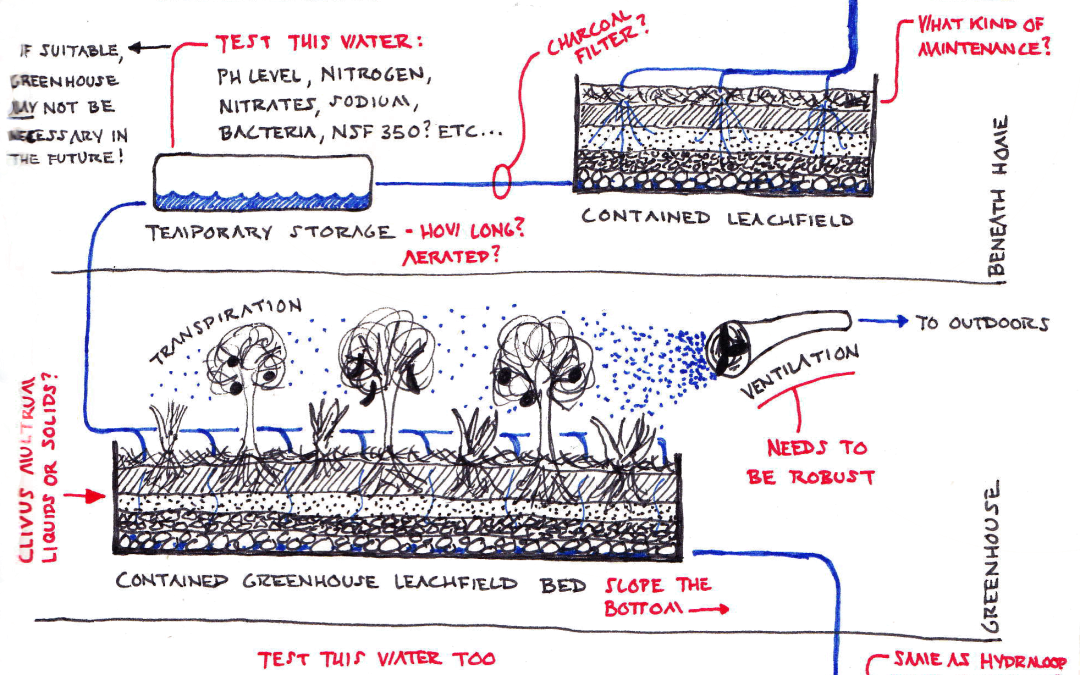
by William | Mar 8, 2024 | Passive House, Small Footprint
Dear Readers,
It’s been a while! While the silence from us has been seemingly extensive, I promise that we have not been sitting idle . If you check out our “Resources for LBC” page, you’ll see our Embodied Carbon Baseline attempts, some results with our material/product vetting (Toxnot Advocacy Letter, Manufacturer Inquiry Document, and Stone Advocacy Letter), and even a synopsis of our Biophilic Design Workshops. We’ve also been busy helping manufacturers pursue material transparency, with one in particular going full-throttle and asked us to make a Declare Label for them.
We have finished preparing the site for the driveway, septic system, and the home’s footprint. We did attempt to relocate and replant as many blueberry bushes, small trees, and moss heaps as we could.
Any trees or mountain laurel removed is intended for reuse in the project itself. Larger trees will hopefully be used for the timber frame structure (we are scraping the CLT idea…blog to follow later), and smaller trees and branches are intended to be used for handrails (I love this guy’s YouTube videos!), and even perhaps siding for our shed…

by William | Aug 11, 2023 | Healthy Living
Dear Readers,
Please join me in welcoming Abby Holt! Our first guest writer on Sustaining Tree, Abby is the creator of Craftability~ a website made to inspire readers to put their own crafting abilities to good use, whether it’s painting, jewelry-making, quilting, or calligraphy.

by William | Dec 15, 2021 | Small Footprint
Dear readers,
My Samsung Galaxy J3 V is a beast. It continues to withstand a high level of wear and tear with me as its owner. I wear it on my running belt in the snow. In the pouring rain. In high temperature heats that are probably unsafe for me to be running in…
I have dropped it on concrete. Down the steps. It has bounced off the toilet. It has even withstood multiple catastrophic events of me simply animatedly walking while swinging my arms…and then my one arm holding the phone swings too energetically into my leg…or a wall…or another person, and the phone has gone S.A.I.L.I.N.G. No case. Just one disheveled screen protector that is as old as the phone.
And you know the best part about this indestructible piece of technology?
It is a hand-me down.
The phone was originally my mom’s. She felt it had gotten too old and wanted a new one. So she gave me this gem of a device back in the summer of 2018. That was three and a half years ago. Wanna know what’s EVEN BETTER? My mom originally got the phone refurbished. I have no idea how old this phone actually is…but I’m betting it’ll last until our first child needs a phone. Which is perfect. The Samsung Galaxy J3 V will officially become a family heirloom.
The reality is though…unfortunately…that I’ll probably accidentally drop the phone out of my truck window tomorrow. Officially reaching its capacity for abuse, the phone will die. And then what do I do with it?

by William | Nov 3, 2021 | Small Footprint
Dear Readers,
I would like to introduce you to a phenomenal business that shares the same mountain range as the Land of the Laurels, just a bit further South: Bark House. Based in Spruce Pine, North Carolina, Bark House began in 1990 by a wife and husband team~ Chris and Marty McCurry. Committed to providing sustainably sourced bark shingles for interior and exterior applications on homes and buildings, they have earned over a dozen different awards and recognitions, including but not limited to: Cradle to Cradle Platinum certification, they are a Certified B Corporation, they have had a Declare Label Red List Free for their Poplar bark shingles, and they were awarded by their local non-profit, Root Cause, as a Support of Local Wood Products Award.
The recognition they have received globally and locally is noteworthy. However, it is just that. Noteworthy. On paper it is impressive, and it deserves to be shared…literally, worthy of noting. But the power behind this business lies not in their stamps or their certifications…or even in that Google and Amazon use their bark frequently in their establishments. The power Bark House holds, lies in the good they have done, are doing, and will continue to do for the Appalachian Mountain Range and the small communities that call it home.
Getting the Bark
Their process of obtaining the bark is based entirely off of regenerative practices~ for the environment, and their community. They began their business with the training of 50 local loggers on how to peel bark off felled trees. The loggers could then sell the trees they took down as profit, as well as the bark from those trees.

by William | Aug 11, 2021 | Net Zero
Dear Readers,
Yes. Leach field. Just when you thought this addition could not get any cooler with its greywater absorbing plants and front entry hobbit door~ we fully made it into an indoor leach field!
Ha! If your heads are screaming “What?!?” That’s fine. Ours are too. But I think we’ve got this…
Let’s start with the mulch basin. Remember how we were thinking of using that as the preliminary filtration means for our kitchen and laundry effluent before pumping it back into the house to our indoor green wall? Well, just as we ditched the green wall…we are now ditching the mulch basin.
Scratching it. Throwing it away. Mulching up the mulch. And…making a new and improved plan to propose to the PA DEP! Whoop whoop! So. Much. Greywater. Fun.
Here is what we are thinking of replacing the mulch basin with:





